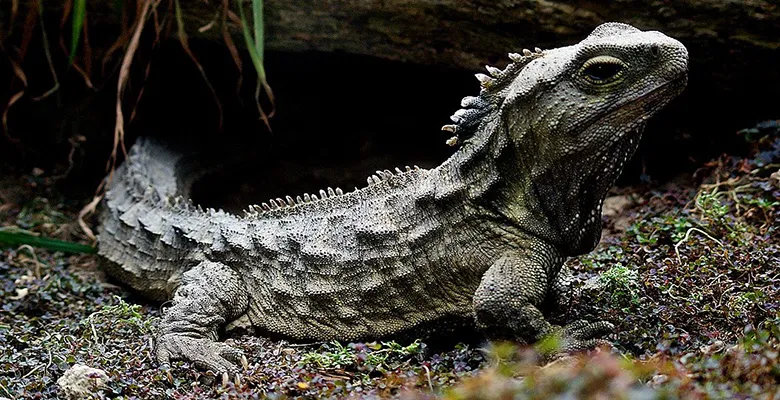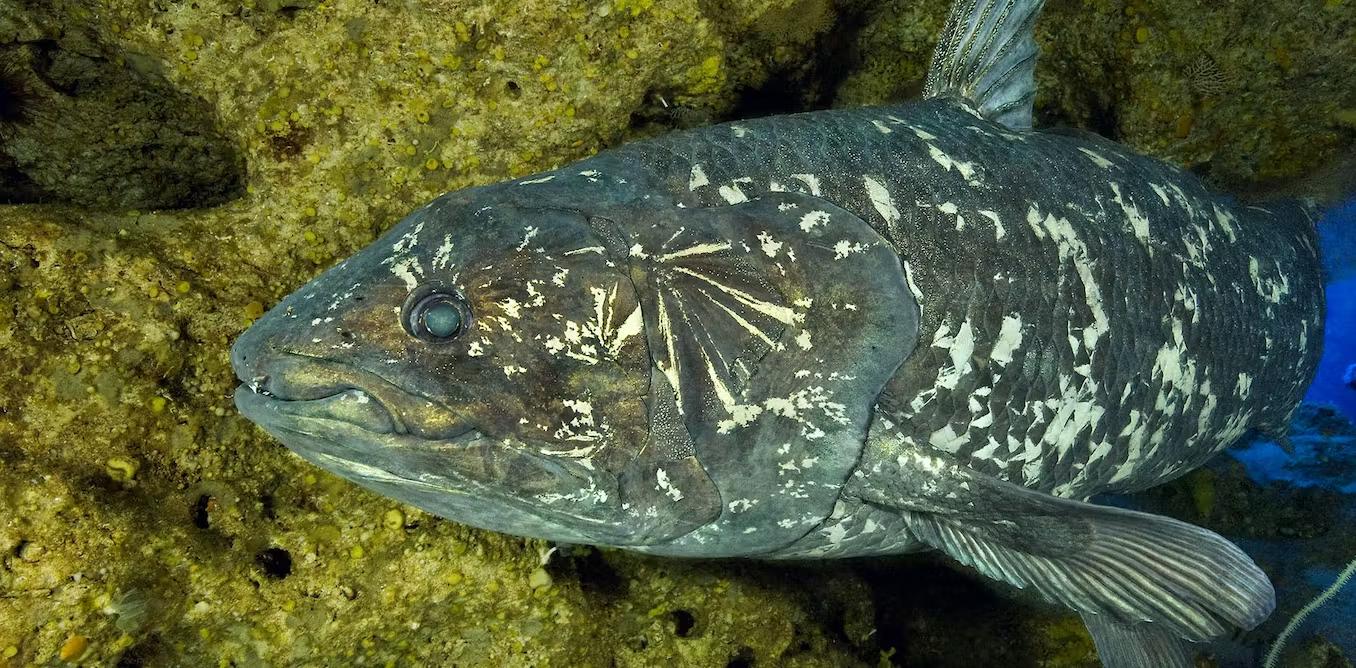What are some prehistoric animals that still exist today
Despite the vast changes that have occurred on Earth over millions of years, a remarkable number of prehistoric animal lineages have survived and continue to thrive in various ecosystems today. These living fossils often referred to as "Lazarus taxa," represent remarkable examples of evolutionary resilience and adaptation.
Some
prehistoric animals, often called "living fossils," have
persisted for millions of years with minimal evolutionary changes.
Here are a
few notable examples and insights into their survival:
Coelacanth -
This fish, dating back about 400 million years, was thought extinct until
rediscovered in 1938. Found in deep waters off South Africa and Indonesia, its
survival is attributed to stable deep-sea environments with low predation and
consistent food sources like smaller fish and cephalopods.
Horseshoe
Crab
- Existing for over 450 million years, these arthropods thrive in coastal
waters. Their tough exoskeletons protect against predators, and their simple,
adaptable diet (worms, algae, and detritus) ensures survival across changing
environments.
Tuatara -
A reptile from New Zealand, dating back 200 million years, it resembles lizards
but is a distinct lineage. Its survival stems from isolated habitats on remote
islands, minimal competition, and a slow metabolism allowing it to endure harsh
conditions.
Nautilus -
These cephalopods, around for 500 million years, live in deep Pacific waters.
Their buoyant, chambered shells and low-energy lifestyle (scavenging and
hunting small prey) help them survive in stable, deep-sea niches.
Crocodilians (Alligators,
Crocodiles) - Originating about 250 million years ago, these apex predators
have robust physiology, opportunistic feeding habits (fish, mammals, birds),
and adaptability to various aquatic habitats, ensuring their persistence.
Why They Survive
These species
occupy ecological niches with little environmental change or competition,
reducing evolutionary pressure. Their generalized diets and resilient
physiologies allow adaptation to shifting conditions. Isolation (e.g., deep
seas or remote islands) also shields them from extinction events that wiped out
less adaptable species.
Prehistoric Animals that Still roam the Earth key Topics
·
Living
fossils
·
Enduring
creatures
·
Remnants
of the past
·
Evolving
survivors
·
Adaptable
species
·
Resilient
lineages
·
Horseshoe
crabs
·
Sturgeons
·
Tuataras
·
Emperor
scorpions
·
Sea
lampreys
Prehistoric Animals that are Still Alive Today
Ever
since the first discovery of dinosaur fossils, people have been captivated;
wondering what life would be like if prehistoric animals and humans co-existed.
Who isn’t gripped by the thrilling concept of a giant lizard predator chasing
them down the street? Or merely by being able to wave at a passing Stegosaurus?
Among the most notable examples of prehistoric animals still roaming the Earth are:
1. Horseshoe
Crabs: These ancient
marine arthropods have existed for over 450 million years and exhibit
remarkable similarities to their fossilized ancestors. Their horseshoe-shaped
shell, five pairs of legs and spiny tail have remained largely unchanged over
eons.
2. Lizards: While they share a reptilian ancestry that goes back millions of years – and have many common genetic traits, such as the laying of eggs – lizards and dinosaurs went on to follow separate paths of development. This is most evident when you consider their legs. If you imagine any of your favorite dinosaurs, their legs point straight to the ground, like those of horses or humans. By contrast, lizards and crocodiles have legs that sprawl out to the side.
3. Tuataras: Native to New Zealand, tuataras are reptile-like creatures that
have been around for over 250 million years. They are considered living fossils
due to their primitive features, such as a third eye and a row of spines
running along their back.
4. Sturgeons: These large, bony fish have been swimming in Earth's oceans for
over 100 million years. Their distinctive elongated bodies, armored plates, and
shark-like cartilaginous skeleton have remained largely unchanged throughout their evolutionary history.
5. Cassowaries: Judging by its giant, claw-like feet alone, it’s easy to see why people think this giant bird is directly descended from dinosaurs such as velociraptors. They are the third largest bird species in the world and have been known to attack humans. These creatures can be found in northern Australia, Papua New Guinea and Indonesia, and have signature blue necks. Some fun facts for you: they produce green eggs and are also really good swimmers.
How to Look Beautiful without Makeup: Natural Ways to Look Beautiful without Makeup
6. Sea turtles: Turtles are exceptionally successful as a species. They are part of the Testudine group of reptiles, including tortoises and terrapins, found on every continent apart from Antarctica, which have evolved to live on land and in both salt and fresh water. They share common ancestry with dinosaurs – having first appeared around 230 million years ago – and show remarkable resilience considering their fellow creatures are being wiped out. Turtles also survived one mass extinction at the end of the Tri-assic period that left an evolutionary space for dinosaurs to evolve, as well as the one at the end of the Cretaceous era that then wiped out the dinosaurs.
7. Ostriches: Ostriches,
cassowaries, kiwis and emus belong to a group of large flightless birds called
ratites. Their link with the dinosaurs? Ornithologist Peter Houde, of the
Smith-sonian Institution, put forward the theory that small dinosaurs evolved
into small birds, some of which flew to environments where their success as a
species depended on staying on the ground.
8.
Coelacanths: These deep-sea fish were thought to have gone extinct along
with the dinosaurs, but a living species was discovered in 1938. Coelacanths
exhibit primitive features like a lobe-finned skeleton and a five-part brain,
reminiscent of their early fish ancestors.
9.
Emperor
Scorpions: These large,
venomous scorpions have been around for over 300 million years. Their robust
bodies, powerful pincers, and long, whip-like tails have remained largely
unchanged over time.
Most popular Health and Wellness Topics: Global Health Issues - Global Public Health
10.
Sharks: Sharks have been swimming in Earth's oceans for over 400
million years and have evolved into diverse forms, from the massive whale shark
to the elusive goblin shark. Their adaptability and resilience have allowed
them to persist through changing sea levels and environmental fluctuations.
11. Crocodiles
and Alligators: These large
reptiles share a common ancestor with dinosaurs and have been around for over
200 million years. They have adapted to a variety of freshwater and saltwater
habitats and continue to be apex predators in many ecosystems.
12.
Sea
Lampreys: These eel-like
fish have existed for over 340 million years and have adapted to a parasitic
lifestyle. Their lamprey-like mouth, lack of jaws, and primitive skeletal
structure reflect their deep evolutionary history.
How to keep Body Weight Constant | How to maintain Weight Loss after a Diet?
13. Snakes: If any animal deserves
to be called a terrible lizard, it’s a snake. They have populated our
nightmares for so long and taken a central role in our phobic mythologies. Even
Harry Potter’s villainous Voldemort has a snake as a pet. There is, as the
Beatles might put it, something in the way they move.
14. Chickens: The evolutionary link
between dinosaurs and birds is well established, even within the
not-always-scientifically-accurate world of Jurassic Park. A more recent
discovery is that one particular dinosaur – the T. rex – shares some
fundamental molecular structures with the common chicken.
How to stop Hiccups in Babies Immediately: Baby Hiccups
The presence of these prehistoric animals on Earth today is a
testament to their adaptability and resilience. They serve as valuable links to
our planet's past, providing insights into the evolutionary processes that have
shaped life on Earth. As we continue to explore the natural world, we may
uncover even more of these living fossils, each offering a unique perspective
on the remarkable history of life on Earth.
FAQ
Are any
prehistoric animals still alive?
What is the
oldest animal still living today?
What animals
are still alive from the dinosaur age?
Tags
Prehistoric
Animals That Lived With Humans, Ancient Animals That Are Extinct, Oldest
Prehistoric Animal Alive Today, Prehistoric Animals A To Z, Ancient Animals
List, Scary Prehistoric Animals, Prehistoric Animals List A-Z, Prehistoric
Animals Size Comparison



















Post a Comment